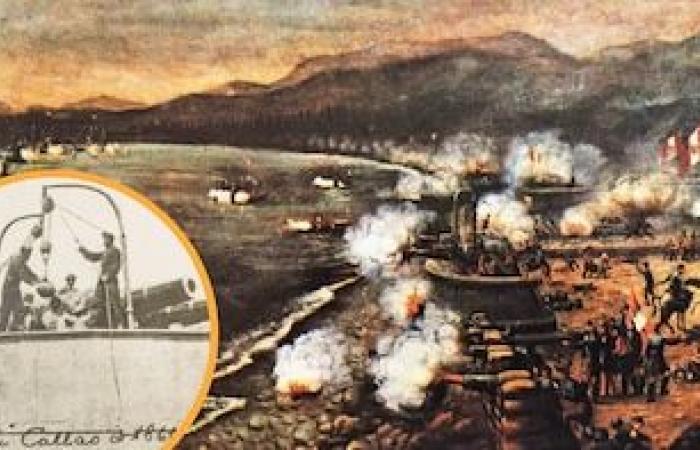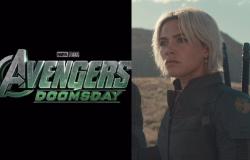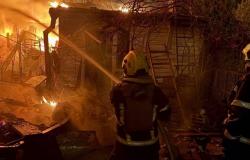After the battle of Ayacucho in 1824, which made it clear to Space And to the world that the colonial domain was over, Peru began to forge, not without stumbling, its uncertain but determined republican identity. But as is usually the case with the wounded empires, the European country did not know how to retire with dignity and, decades later, he played the door again – this time with cannons – pretending to recover what no longer belonged to him.
It was then, in 1866, that the port of Callao became the stage of a categorical response: the fight of May 2 was a cry of sovereignty. Despite the internal political divisions and the institutional fragility of the country, different social sectors joined to resist the bombardment of the European squad.
The background of this confrontation date back to 1862, when the Spanish crown sent a naval flotilla to the South American coast under the pretext of performing a scientific mission. But what happened in Peru in that year and in the following until the beginning of the war against the Spaniards? It is known that, at that time, Guano’s export from the coastal islands transformed the national economy and politics.

In the mid -nineteenth century, Peru crossed a prosperity stage promoted by the exploitation of guanoa highly valued natural resource in European markets. For years, this business was administered by foreign signatures, being the British Antony Gibbs & Sons one of the most influential.
“With a commercial house such as Gibbs managing most of the Guano’s trade that reached the United Kingdom, the British empire and Europe would seem a few doubts that Peru would be an excellent example of how that informal empire worked,” wrote the Scottish historian William M. Mathew in his book ‘The English firm Gibbs and the monopoly of the guano in Peru’.
This foreign domain in Guano’s trade began to weaken in 1862, when the Peruvian State promulgated a law that prioritized the participation of local entrepreneurs in business management. This measure allowed the so -called ‘children of the country’ to resume control of one of the main sources of national income.

Meanwhile, in Europe, Spain tried to reaffirm its presence in the international arena. After losing most of his empire in America, he undertook various military actions such as the occupation of territories in Morocco and on the African coast of the Atlantic. He still maintained possessions in the Caribbean, Asia and Oceania. In that context, he turned his gaze to South America, a region where he had had colonial domain and where he still retained economic and political interests.
In 1862, The Spanish monarchy sent a squad to the South American Pacific under the pretext of carrying out a scientific expedition. However, the true purpose was to establish presence in the region and ensure the rights of its subjects. Among the members of the mission, Marcos Jiménez de la Espada, recognized for their work in the collection of historical documents.
Spain also had among its objectives to install naval bases along the Pacific coast. When the squad departure was known, the then Peruvian president Miguel de San Román asked the Congress of special powers to strengthen the Navy. However, the legislature denied the support.
San Román had assumed the position after the mandate of Ramón Castilla, but died in 1863, leaving the presidency temporarily in the hands of Castilla himself. Shortly after, Pedro Diez Canseco was appointed interim president, until Juan Antonio Pezet assumed the country’s driving that year.

The Spanish fleet, under the command of Admiral Luis Hernández-Pinzón, arrived in Valparaíso, where he was received with distrust due to his airs of superiority. From there, he went to Callao, arriving in July 1863. Although the relations between Peru and Spain were void since independence, Spanish officers were cordially attended in Lima during their brief stay.
After passing through the Peruvian port, the expedition continued its route. However, a fact in the north of the country caused its return. In the Talambo hacienda, near Chiclayo, where Basque settlers dedicated to cotton cultivation lived, a fight with local neighbors occurred. The altercation left a Spanish Spanish and Peruvian. This episode was politically exploited by the diplomat Eusebio Salazar and Mazarredo, who was part of the expedition.
Salazar, controversial figure and with a haughty posture, presented claims in the name of the Spanish crown. He claimed to directly represent the King with the title of Regio Commissioner, a figure of the viceregal period, which was rejected by the Peruvian authorities. His outrage grew and, in coordination with Hernández-Pinzón, ordered the occupation of the Chincha Islandsrich in Guano. This act was considered a direct aggression against national sovereignty.

In dialogue with TV Peruthe historian Juan Luis Orrego Penagos said that the Spaniards took the islands of Chincha “because they were the main deposits of the guano.” “By occupying the islands, they were somehow embarking on the guano and exerting pressure on Peru,” he added.
The Peruvian Foreign Ministry informed the governments of the continent about the foreign occupation. It should be noted that President Pezet did not declare war on Spain, since the country was not militarily prepared.
Regarding the president’s attitude, historian John Rodríguez said the following in the program It happened in Peru: “We would have to get a little in the place of Pezet. The problem facing Peru at that time was that, from the military point of view, we did not represent a dissuasive force. The Peruvian government had no choice but to try a diplomatic exit.”
Despite his conciliatory position, Pezet sent Francisco Bolognesi to Europe in the mission of purchase of armament. In parallel, Peruvian officers such as Miguel Grau promoted the construction of the Huáscar monitor and the Frigate Independence in British shipyards. Also Other ships such as Union and America were acquired, which were already operational.

In December 1864, Admiral José Manuel Pareja replaced Hernández-Pinzón, and the Spanish squad received reinforcements, including Numancia battleship. Given this pressure, Pezet agreed to start negotiations. On behalf of Peru, Manuel Ignacio de Vivanco signed a Treaty with a couple on January 27, 1865, aboard the Frigate Villa de Madrid. In this document, Peru agreed to pay a debt of three million pesos to Spain, derived from previous agreements, and the Spaniards pledged to withdraw from the occupied islands.
The agreement was badly received by public opinion and unleashed a wave of indignation. In Arequipa, a rebellion began that was backed by officers such as Lizardo Montero, who offered his boat to General Mariano Ignacio Prado. The insurrect forces marched towards Lima and forced the departure of Pezet from power. Prado assumed the presidency in 1865.
On the other hand, Chile reacted to the taking of the Guaneras Islands of Chincha by the Spaniards. He had closed his ports to the enemy Navy and, as retaliation, the squad commanded by a couple bombed the port of Valparaíso on March 31, 1866. From the hills, the Chileans saw the destruction of their city.
Meanwhile, in Peru, Manuel Pardo took care of gathering resources for war; José María Quimper assumed functions in internal order; and José Gálvez, Figure of the Cabinet, led political efforts. Finally, the Peru declared war on Spain in January 1866.

After the bombing of the Chilean port of Valparaíso, which occurred on March 31, 1866, the Spanish squad, under the command of Admiral Méndez Núñez, headed to Callao. Before arriving, they made a strategic stop on San Lorenzo Island, off the Peruvian coast.
Although they were prepared to attack since May 1, the commanders decided to wait another day, since on May 2 he had a historical meaning for Spain: he commemorated the popular uprising of Madrid against the Napoleonic invasion in 1808. By then, commercial ships had already moved away from the conflict area.
On land, the city of Callao showed clear signs of preparation: the houses kept their doors closed, flags waved everywhere and the battalions were kept alerts near the fortifications. Also firefighters, both from Lima and Callao, had positioned themselves in the last buildings between the port and Bellavista, ready to attend in any emergency.

The Spanish squad had six frigates, a corvette and some support vessels, with around 300 cannons available. For their part, the Peruvian defenders had installed numerous batteries and summoned soldiers and civilians. Many of the cannons were new, and their operators had barely had time to train. The defense was organized by José GálvezSecretary of War, who assumed responsibility.
At 11 in the morning of May 2, the confrontation began. The Spanish ships were placed in V formation and advanced dangerously near the coast. The fire opened simultaneously in all sectors. In the north, the attacks were repelled effectively, and enemy ships suffered important damage. In the center, civilians had installed at the last minute the so -called ‘town cannon’, which also went into action.
The southern sector was the most beaten. There operated the imposing Numancia battleship, which caused serious in the Peruvian lines. In that part of the port was the Torreón de la Merced, a still unfinished structure that looked like an unfinished tower. From a high level, a kind of balcony, José Gálvez directed the defense. However, an explosion caused by a pump reached the gunpowder bags as protection. The place exploded instantly, claiming Gálvez’s life and those who accompanied him.

Throughout the fight, the music bands kept the rhythm with military marches, trying to raise the spirit of the defenders. While Gálvez’s loss meant a hard blow, the resistance was not broken. Without a clear command, the fight lasted until the end of the afternoon. At five, when the sun began to hide, the fire was ordered. Still at that time, the strong Santa Rosa threw its last shots. The confrontation lasted about five hours.
Damage to the city were not as serious as it was feared. In addition to the collapse of the Merced Torreón and some minor fires, the material losses were limited and the civilian population barely suffered consequences.
The Spaniards, convinced of having fulfilled their mission, retired to San Lorenzo. There they attended their injured, buried their dead and repaired their boats. Shortly after they began the return to their country. His presence in South American waters had lasted almost four years, and the trip back through the Cape Horn during the crude winter was tragic: many crew members died from diseases such as scurvy.







